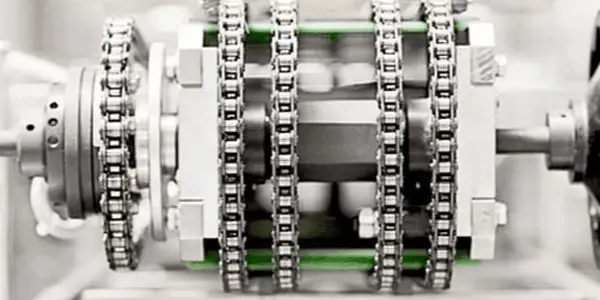EAC Conformity Confirmation for EAEU countries
Most products exported to member states of the Eurasian Economic Union (EAEU) are subject to mandatory EAC conformity assessment.
The quality of these products must comply with the EAC standards outlined in the TR CU/EAEU directives of the Eurasian Economic Union. EAC conformity is confirmed through an EAC declaration or EAC certification issued by EAEU member states.
For manufacturers, an EAC approval means they can export their certified products to the entire Eurasian Economic Union without additional restrictions.
Usually, no further national approvals or certificates such as GOST-R for Russia or GOST-K for Kazakhstan are required in EAEU countries.
EAC Declaration of Goods for EAEU Countries
With an EAC declaration or an EAC certificate, the manufacturer is confirmed that the goods comply with the uniform technical Regulations (TR CU/EAEU Guidelines) of the Eurasian Economic Union (EAEU).
Thus, the EAC conformity with the EAC declaration or an EAC certificate is confirmed. An EAC certificate of conformity is an official confirmation of the Eurasian Economic Union on compliance with the EAC standards and GOST standards.
The EAC approval is based on technical documents, test protocols or production audits. The EAC conformity assessment is carried out by accredited testing laboratories located in the Eurasian Economic Union.
The EAC declarations and the EAC certifications can only be carried out by approval bodies established in the Eurasian Economic Union and accredited by EAEU authorities.
All documents must be submitted in the Russian language or in the official language of the respective EAEU Member State. The EAC declarations are recognized equally in all member states of the Eurasian Economic Union.
EAC Certification for Various Product Groups
EAC certifications are issued for different product groups:
Product | Information |
|---|---|
Machinery and Equipment | EAC Certification for Machinery and Equipment |
Electrical and Radio Equipment | EAC Certification for Electrical and Radio Equipment |
Explosion-proof Equipment | EAC Certification for Explosion-proof Equipment |
Clothing and Footwear | EAC Certification for Clothing and Footwear |
Food and Dietary Supplements | EAC Certification for Food |
Chemicals and Fuels | EAC Certification for Chemicals |
Vehicles and Automotive Parts | EAC Certification for Vehicles |
Packaging and Materials | EAC Certification for Packaging |
Furniture and Interior Accessories | EAC Certification for Furniture |
Perfume and Cosmetics | EAC Certification for Perfume and Cosmetics |
Unlike EAC declaration, products subject to EAC certification must be tested for quality and compliance with TR CU/EAEU regulations in a testing laboratory accredited and located in the EAEU member states.
With the EAC declaration, the manufacturer can declare EAC conformity themselves and state compliance with the TR CU/EAEU regulations. An EAC declaration is a manufacturer's declaration of conformity that products meet the requirements of the TR CU/EAEU regulations of the EAEU member states.
An EAC declaration is issued and declared by the manufacturer, the authorized representative, or the importer. All required tests can either be conducted in an accredited testing laboratory or by the manufacturer themselves. Finally, the EAC declaration is entered into the unified register of approved products.
The safety requirements of the Technical Regulations (TR CU/EAEU regulations) of the EAEU member states clearly and explicitly define whether a product is subject to mandatory EAC certification or EAC declaration.
Processes of EAC conformity confirmation:
Step | EAC Certificate | EAC Declaration |
|---|---|---|
1. | Application to a certification body | Determination of applicable EAC standards |
2. | Classification of products and samples | Selection of methods for conformity assessment |
3. | Testing and analysis of product samples | Submission of records and documents |
4. | Conducting production audit | Testing and analysis of products |
5. | Preparation of test reports | Preparation of test reports |
6. | Issuance of the EAC certificate | Issuance of the EAC declaration |
7. | EAC marking of certified products | EAC marking of declared products |
8. | Conducting inspection control for EAC certification | No inspection control is required for EAC declaration |
The EAC declaration and the EAC certification are forms of the EAC conformity assessment. With an EAC declaration or an EAC certificate, the manufacturer is confirmed that the goods comply with the safety requirements of the TR CU directives.
The products subject to approval are treated according to the regulations of Decision N620 dated April 7, 2011, and are subject to mandatory EAC approval in the EAEU states.
Difference EAC Certificate and EAC Declaration
What is the difference between an EAC Certificate and an EAC Declaration?
An EAC Certificate confirms compliance with the regulations of the TR CU/EAEU directives of the EAEU countries. Under EAC certification, the EAC conformity of goods is confirmed by a certification body. Therefore, the responsibility for the quality of products lies with both the manufacturer and the certification body.
An EAC Declaration is a conformity document issued based on information and data provided by the manufacturer. Thus, an EAC Declaration is a manufacturer's declaration about conformity with the TR CU/EAEU directives. This differentiates between the two types of EAC conformity assessment.
EAC Certificates and EAC Declarations differ based on several criteria:
Difference | EAC Certificate | EAC Declaration | SGR Registration |
|---|---|---|---|
Issuance of EAC approval | Official certification template | DIN A4 sheet, form according to GOST standards | Official certification template |
EAC assessment method | TR CU directives, GOST standards | TR CU directives, GOST standards | TR CU directives, GOST standards |
Responsibility for EAC approval | Certification body, service provider | Manufacturer, importer, or representative | Certification body, service provider |
Application submission in EAEU countries | Manufacturer or authorized representative | Manufacturer or authorized representative | Manufacturer or authorized representative |
Classification of goods | Certification body, service provider | Manufacturer, importer, or representative | Certification body, service provider |
Annual inspection control | Annually, according to TR CU/EAEU directives | Voluntary, no inspection obligation | Voluntary, no inspection obligation |
Registration of EAC approval | Certification body, service provider | Manufacturer or authorized representative | Certification body, service provider |
Validity of EAC approval | 1 to 5 years, or batch delivery | 1 to 5 years, or batch delivery | 1 to 5 years, or batch delivery |
Supporting Documents for Conformity Assessment
The following documents are required for the EAC conformity assessment:
- Product description and description of intended use
- Information on manufacturers, representatives, and importer
- Information on the product composition
- Operating, maintenance, and installation manuals
- Strength calculations for pressure equipment
- Safety documentation and risk analysis
- Circuit diagrams and welding documentation
- Pressure vessel passport for pressure equipment
- Technical passports and drawings
- Certificates for materials and components
- Existing certificates (CE, ISO, GOST, EAC)
Depending on the product and TR CU/EAEU regulations, additional documentation may be required.
Duration and Costs of Conformity Assessment
The costs of the EAC conformity assessment are determined by various factors, such as: the requirements of TR CU/EAEU directives, the number of necessary product tests, the nature and composition of the products, as well as the availability of all required operational documentation in the appropriate EAEU languages.
Furthermore, it must be clarified how extensive the required testing is and whether additional product tests are necessary (e.g. inspections, audits, or certification of the quality management system). TR CU/EAEU directives clearly and explicitly define which product groups must be certified according to each procedure.
The actual costs for the EAC conformity assessment are calculated individually for each product. The decisive factors for evaluating the costs of EAC declarations or EAC certifications are the type of product and the mode of delivery.
Complex technical products, such as machinery or production plants, are usually certified and are significantly more expensive to approve under EAC than simpler products like furniture, textiles, or shoes. Simpler products are usually declared.
Validity of EAC Conformity Approvals
An EAC declaration or EAC certificate can be issued either contract-related or related to series production. EAC conformity approvals are issued either for individual shipments or for serial deliveries for a period of 1 to 5 years.
The EAC declarations and EAC certificates can be issued simultaneously in accordance with multiple TR CU directives at the same time.


